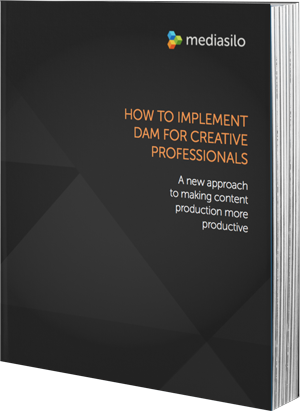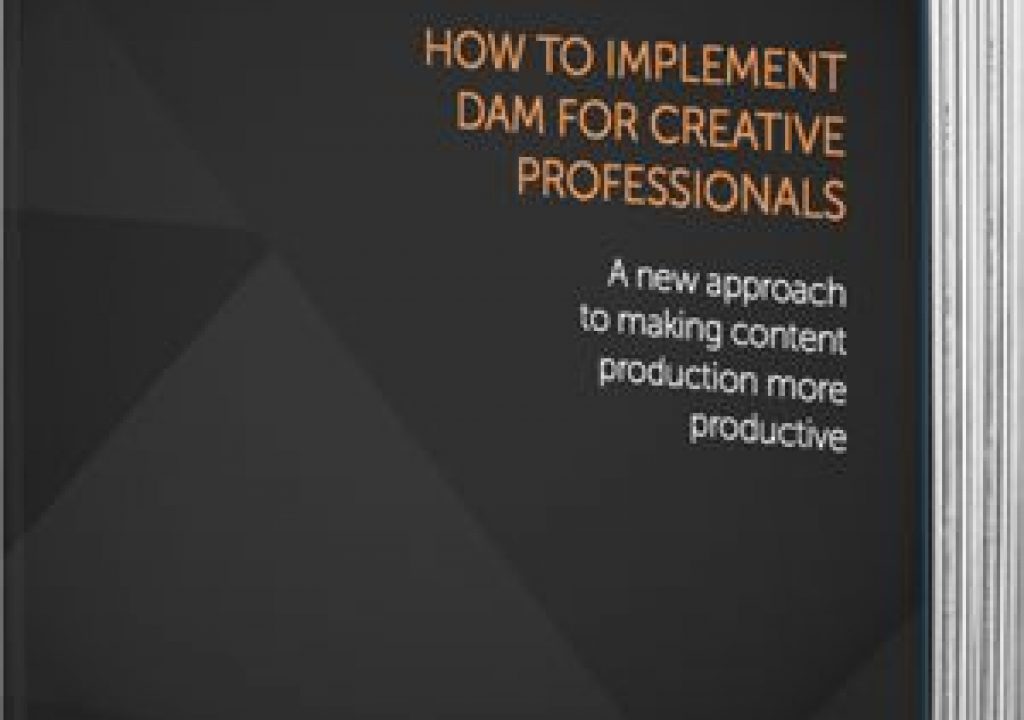
MediaSilo is dedicated to helping people solve those challenges and identify the opportunities that come with them. Their free ebook, How To Implement DAM For Creative Professionals is a great example of their dedication to this very topic. It showcases how the right process can bring about a solution that will address the challenges you’re dealing with and also open up new opportunities.
We talked with Kai Pradel, CEO of MediaSilo, about how creative professionals need to approach DAM, how the industry has changed and what people need to keep in mind when they’re looking at a digital asset management solution.
DAM Coalition: Your company is all about producing, storing and presenting video in an easy manner. How many people know this is something they needed help with, and how many realized that only after you started working with them?
Kai Pradel: Our conversation with a prospect rarely starts by asking “What are you doing about asset management?” All content producers have pain points that slow them down or cut productivity in the organization. These are often problems on the production side, such as sharing content for review or distributing high-res footage over the web. A good DAM platform tackles the everyday problems first, in order to reduce friction around deadlines and deliverables. The bigger picture usually forms once the DAM and its workflow tools become second nature, and the value becomes apparent in having a media repository that is universally searchable and always accessible. Forward-thinking CTOs and CIOs are well aware of the need to manage media, but most content producers only see the value once they have access to their libraries and other content.
Your new ebook is titled, “How to Implement DAM for Creative Professionals”. Do you think creative professionals need to or should look at DAM differently?
Yes. We think creative pro’s should choose tools that help them get things done first. They are increasingly the main decision makers behind software and service procurement. Software as a Service DAMs that are priced within the acceptable opex range are often a godsend for taxed production teams. It’s not the asset management aspect that is initially compelling to this group; it’s the low cost, on-demand nature of these productivity tools that make it easy to evaluate, and ultimately standardize, a digital media workflow. Traditional on-premise DAMs address the needs of CIOs and CTOs, such as storage strategies, security, on-premise deployment, and single sign-on. Creative pros care about these things, but no asset management system will stand a chance without first addressing daily use cases, such as online review, distribution, and secure sharing. Creative pros should first evaluate a DAM based on how well it addresses their most important needs (sharing, distribution, and review), secondly on how well the the tool will scale in their environment (user seats, storage, and storage options), and finally on whether the DAM has ways to expand beyond an off-the shelf offering.
How have you seen workflows change and evolve in the last few years?
We are constantly impressed by the workflow hacks we see among video pros. This audience is crafty and where there is a will, there is a way. On one hand, workflows change all the time with new camera systems and software. On the other hand, some technologies never seem to go away (like FTP). From an asset management perspective, it’s important not to dictate workflows but to allow the user to implement technology as they see fit. One of the most exciting trends currently is how tools are starting to move closer to the user’s native environment, such as the desktop and Adobe’s new custom panel offering. Another exciting development that I would have predicted much sooner is the use of metadata to automate media workflows and improve asset visibility.
What are some of the biggest challenges you've seen individuals and organizations struggle with?
Large organizations struggle with the shift in technology decision-making from central IT to the individual production teams. There may be dozens of unsanctioned SaaS products in use at the same time, including consumer-focused tools that. The lack of oversight and vetting raises security and procurement concerns that often go unaddressed. This situation is not unique to creative teams, but is part of the decentralization of software procurement in general.
For any size organization, the sheer amount of media produced poses significant challenges. Content has to be ingested, tagged, and stored somehow. There is more content being produced than can be stored, so a lot of valuable footage simply gets discarded. The systems that can cost-effectively manage content on this scale are new and still developing. Large entities who are unwilling to challenge the status quo of software procurement will have a tough time at it.
Changing business models and media consumption patterns also bring about new opportunities that networks and studios are struggling to understand and implement. Most studios sit on a wealth of archive material that collects dusts in a cave.
Smaller teams and individuals feel the pressure of doing more faster with lower budgets. Fewer people on a production means someone has to pick up the slack. Hence the need for web-based tools that can be self-provisioned to solve the “now” problem.
How many creative professionals factor in digital asset management when they're working out the logistics of a project? And how can doing so change the scope and deliverables for that project?
As asset management systems are increasingly moving towards self-provision SaaS models, more creative pro’s consider them due to the low barriers to getting started.
In commercial production, asset management can be a significant revenue opportunity and can be sold as an ongoing maintenance service after production wraps. We have several customers who work for large international brands to produce product training videos, tutorials, customer testimonials, or event videos. An asset management platform that allows the agency to package content attractively–and make it available on-demand without an upfront investment–is a way to generate recurring revenue and keep clients close.
In episodic or reality tv production, asset management is gaining significant traction as a way to allow teams in different locations to collaborate more effectively. A good example of how DAM can be game changing is when you observe a team using the new MediaSilo content panel for Adobe Premiere, which immediately connects editors with footage shot in different locations. This integration enables a new kind of rough-cut workflow between editors in one place and production in another. Better connection can lead to faster turnaround and a more efficient post-production schedule.
What are the benefits of launching organically? And what can happen when a launch isn't organic?
Organically-grown DAM initiatives are easy to spot, because there are internal champions who are intimately familiar with the pain points and work where the rubber meets the road. They are usually well-respected among their peers, and are willing to share best practices between groups. When we find the champion, we also find the person who will be a filter for the group at large. Having an internal champion addresses another common point of failure – decision by committee.
Many DAM initiatives fall victim to the committee approach, where a master list of requirements is presented to DAM vendors in the hopes that someone can check all the boxes. These projects are often obsolete by the time they actually launch because in most cases, no single vendor fulfills all requirements and the project is off to a rocky start as compromises are made that inadvertently alienate certain stakeholders.
An organic launch spreads from one team to another on the basis of its success and what counts are the benefits of a given implementation.
Has the cloud changed the way digital asset management can and should be approached?
The cloud has removed most of the complexities around deploying and managing a DAM. There is no hardware to purchase, and in most cases there is no long-term financial commitment. Asset management shifts from a capital expenditure to an operational expense, which makes DAM is accessible to a whole new set of customers.
From our perspective, cloud-based asset management is all about increasing productivity. By encouraging proxy-based workflows where source files are not stored in the cloud but high-resolution mezzanine files are used as previews, we have have effectively lowered the barriers to entry even further for teams that have not traditionally sought out digital asset management solutions. This includes in-house promo departments and small to medium production companies.
The cloud is no longer a magical black box. DAM customers are increasingly aware of their options when it comes to running their system in the cloud. Our MediaSilo for AWS account is a good example of a product that is successful because we allow our customers to purchase the utility of our platform, while they bring their own Amazon credentials and cheap S3 and Glacier storage.
What's one thing people should always keep in mind when it comes to digital asset management?
DAM is no longer about four walls. It’s about providing a secure way to allow a dispersed set of users to be productive when it comes to sharing, storing, and finding media. Vendors who don’t offer open APIs or have publicly-available integration points will become less relevant as users seek to pick their best-of breed tools and expect them to play together nicely.

